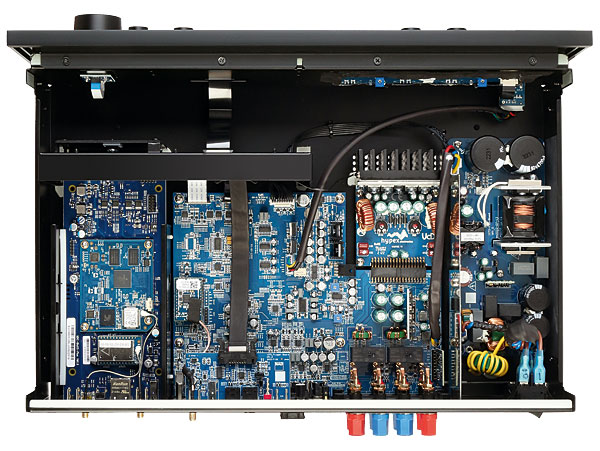JungleXray
Member
How hot is too hot?
I should start by saying over the last couple of months my vintage 1980's era McIntosh was finally starting to fail.
A MC502 power amp to be exact. A barebones (compared to the rest of their catalog) class AB, Direct coupled, 50 watt into 8 ohms beauty/beast of an amp. One that paired really well with my vintage Klipsch Cornwalls. But alas, the speaker channels were starting to fail. Getting quieter and quieter until producing no sound. A flip of the speaker on/off switch would be a temporary remedy. But quickly burdening me with getting my ass off the couch to flip it again. No amount of Deoxit would fix it. After some quick research, some guy on the internet said that that speaker switch is a common failure point. A cheap fix I'm sure, but being that the amp is approaching 40 years old I thought maybe it be better to replace it. Also I'm sure popping the hood on that thing would reveal other time bombs that need to be fixed. Looking at you capacitors.
So I thought I'd replace it with a new class D amp. It's the efficiency that really intrigues me. Modern technology. State of the art.
But black boxes from China just don't really do it for me. Just my preference. I want it to look as good as it sounds. Enter the NAD 3050.

Every thing I could want in a an amp. Modern and vintage. Beautiful, practical, and "economical". This could replace my entire system if I wanted it too.... or so I thought.
The first bummer: I planned on using this as a power amp only. Pluggin' my Mini DSP SHD into the main in. But, if I do that the meters don't work. And let's be honest, the meters are 99% of my purchase of this amp. Bummer. I really like the versatile of the SHD with full Dirac. To get Dirac bass management on this would cost me another 500 bucks for the modular card BluOS thing.
Okay, so I'll just use the SHD as a transport and plug the digital out into the s/pdif input of the NAD. But I don't know how well this integrated NAD performs. Soundstage Network did measurements, but to me that look just OK in some areas like SNR and dynamic range. But I'm not the best at deciphering all those numbers sometimes.
Maybe I could experiment and put the SHD in the pre-out to main in loop?
The second bummer is this thing get pretty hot. Not like burn your hand hot but I would say past warm! I thought this thing would be cool and efficient! What's getting hot in there? I could leave the McIntosh on all day and it would barely get warm thanks to its massive heat sinks.
SO. Whats going on here?
I should start by saying over the last couple of months my vintage 1980's era McIntosh was finally starting to fail.
A MC502 power amp to be exact. A barebones (compared to the rest of their catalog) class AB, Direct coupled, 50 watt into 8 ohms beauty/beast of an amp. One that paired really well with my vintage Klipsch Cornwalls. But alas, the speaker channels were starting to fail. Getting quieter and quieter until producing no sound. A flip of the speaker on/off switch would be a temporary remedy. But quickly burdening me with getting my ass off the couch to flip it again. No amount of Deoxit would fix it. After some quick research, some guy on the internet said that that speaker switch is a common failure point. A cheap fix I'm sure, but being that the amp is approaching 40 years old I thought maybe it be better to replace it. Also I'm sure popping the hood on that thing would reveal other time bombs that need to be fixed. Looking at you capacitors.
So I thought I'd replace it with a new class D amp. It's the efficiency that really intrigues me. Modern technology. State of the art.
But black boxes from China just don't really do it for me. Just my preference. I want it to look as good as it sounds. Enter the NAD 3050.
Every thing I could want in a an amp. Modern and vintage. Beautiful, practical, and "economical". This could replace my entire system if I wanted it too.... or so I thought.
The first bummer: I planned on using this as a power amp only. Pluggin' my Mini DSP SHD into the main in. But, if I do that the meters don't work. And let's be honest, the meters are 99% of my purchase of this amp. Bummer. I really like the versatile of the SHD with full Dirac. To get Dirac bass management on this would cost me another 500 bucks for the modular card BluOS thing.
Okay, so I'll just use the SHD as a transport and plug the digital out into the s/pdif input of the NAD. But I don't know how well this integrated NAD performs. Soundstage Network did measurements, but to me that look just OK in some areas like SNR and dynamic range. But I'm not the best at deciphering all those numbers sometimes.
Maybe I could experiment and put the SHD in the pre-out to main in loop?
The second bummer is this thing get pretty hot. Not like burn your hand hot but I would say past warm! I thought this thing would be cool and efficient! What's getting hot in there? I could leave the McIntosh on all day and it would barely get warm thanks to its massive heat sinks.
SO. Whats going on here?

